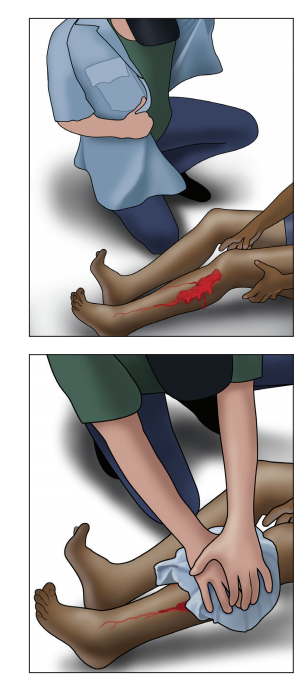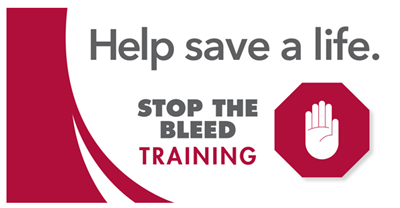You can save a life: what you must know as a bystander of a traumatic injury
For those among us who have dedicated their lives to caring for others within the hospital setting, life and death are regrettably very familiar topics. Our Emergency Department personnel have the responsibility and the privilege of caring for families in their most vulnerable moments, and because we are a Level One Trauma Center our dedicated staff is expertly trained to care for patients who have suffered accidents or injuries of the most critical nature.
Team work saves lives
When a patient comes to the Emergency Department seriously injured, they are cared for by a team of professionals- emergency physicians, trauma surgeons, nurses, technicians, social workers, respiratory therapists, pharmacists and a host of other physician specialists when needed such as neurosurgeons, orthopedists, plastic surgeons, anesthesiologists or critical care physicians. Just about every type of doctor you can imagine is a part of our network, available to care for a patient’s individual needs. It’s this team approach that save lives by getting a very sick patient exactly what they need quickly.
As trauma care has advanced over the years, trauma specialists have recognized, though, that there’s one aspect of this team approach that is lacking. They’ve identified that in this long chain of events that must occur to save a life, there is one link weaker than all the others. You see, here in the hospital we’ve practiced our protocols and honed our skills to become a well-oiled machine set into action when a trauma patient comes through our doors. The weak link in the chain, though, is what happens to the patient BEFORE they come through our doors.
When an accident or injury occurs, no matter how quickly emergency personnel arrive bystanders will always be the first on the scene. When a person is critically injured and bleeding they can bleed to death within five minutes, making the actions of bystanders the difference between life and death.
Do you know what to do in the event of a bleeding injury?

We don’t often like to imagine ourselves or our loved ones the victims of a serious accident or injury. And while events such as car accidents, gun violence and mass casualties are not commonplace for most of us, the sobering reality is that trauma is the leading cause of death for Americans under the age of 46. It is prudent to learn what actions you as a bystander can take to save a life if you were to find yourself in an unthinkable situation.
On March 31st, Orlando Health took part in Stop the Bleed, a national awareness campaign highlighting the necessity for bystanders to care for someone with a bleeding injury before emergency help arrives. Trauma specialists will conduct training seminars for members of the public to learn what they can do to save a life when a trauma occurs. Below you’ll find some of the important take-home points to be discussed.
What you must do if someone is injured and bleeding
 When a person experiences traumatic injury, uncontrolled bleeding is the number one preventable cause of death. The faster and more efficiently bleeding is controlled, the better that person’s chance of survival. If you’re a witness to a traumatic injury, here’s what you need to do:
When a person experiences traumatic injury, uncontrolled bleeding is the number one preventable cause of death. The faster and more efficiently bleeding is controlled, the better that person’s chance of survival. If you’re a witness to a traumatic injury, here’s what you need to do:
First, secure your own safety and then secure the safety of the injured. Then, engage in the ABC’s of trauma care response.
Alert the authorities
Call 9-1-1 or ensure that someone else is calling 9-1-1 immediately.
Bleeding
Find the source of the bleeding; remove clothing if necessary.
Identify if the bleeding is life-threatening- loss of limb, loss of consciousness, victim is confused, blood spurting out or pooling on the ground, clothing soaked with blood, blood won’t stop coming out of the wound.
Compress
In order to stop bleeding, you must compress the bleeding blood vessel, and this can be accomplished in a few different ways.
Apply direct pressure to the wound
 Using a clean cloth, cover the wound and apply pressure by pushing on it with both hands. Use clothing for a cloth if none is available.
Using a clean cloth, cover the wound and apply pressure by pushing on it with both hands. Use clothing for a cloth if none is available. - Try to stuff the cloth down into an open wound and press as hard as you can, applying continuous pressure until medical personnel arrive.
Apply a tourniquet
- For life-threatening bleeding from an arm or leg, apply a tourniquet if one is available in a first aid kit.
- Wrap the tourniquet around the bleeding arm or leg 2 or 3 inches above bleeding site (but not over a joint).
- Tighten the tourniquet as much as possible; this will cause pain but is necessary to stop life-threatening bleeding.
- Note the time the tourniquet was applied.
Pack the wound and apply direct pressure
- For life-threatening bleeding from an arm or leg when a tourniquet is not available OR for life-threatening bleeding of the neck, shoulder or groin, pack the wound with gauze or clean cloth.
- Use bleeding control gauze from a first aid kit if available.
- After packing gauze into the open wound, apply steady pressure on the wound with both hands as hard as you can until help arrives.
Although we hope you never need to use this knowledge, it’s vital to know what to do in case an unforeseen trauma does occur.

Stop The Bleed - Training Class For The Community
Once Every Three Months (Quarterly) 6:00pm – Check Registration Form for Specific Dates
No matter how rapid the arrival of professional emergency responders, bystanders will always be first on the scene. A person who is bleeding can die from blood loss within five minutes; therefore, it is important to quickly stop the blood loss.
Bleeding Control Basic (BCon) course is designed for bystanders who have little or no medical training but who may be called upon as immediate responders to provide initial trauma care and bleeding control to a victim of traumatic injury prior to the arrival of emergency medical services (EMS).










